
With billions of websites online today, there is a lot of information on the Internet. Search engines make this information easier to find. Let’s look at the basics of using search engine, as well as some techniques you can use to get better search results.
How to search
the web
There are
many different search engines you can use, but some of the most popular include
Google, Yahoo!, and Bing. To perform a search, you’ll need to navigate to a
search engine in your web browser, type one or more keywords-also known as search
terms––then press Enter on your
keyboard. In this example, we’ll search recipes.

After you
run a search, you’ll see a list of relevant
websites that match your search terms. These are commonly known as search results. If you see a site that
looks interesting, you can click a link to open it. If site doesn’t have what
you need, you can simply return to the results page to look for more options.
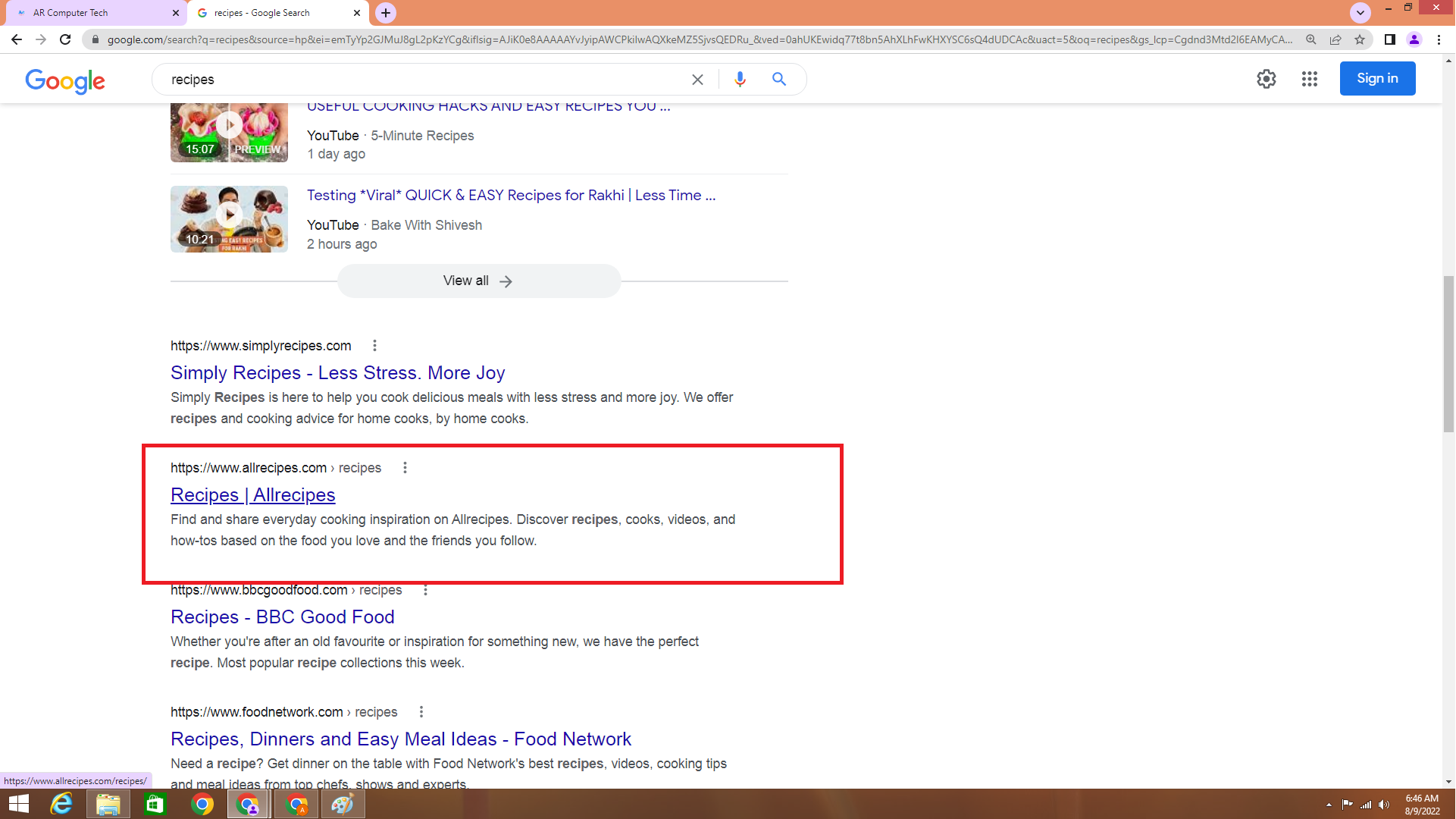
Most
browsers also allow you to perform a web search directly from you address bar, although some have a
separate search bar next to the
address bar. Simply type your search terms and press Enter to run the search.
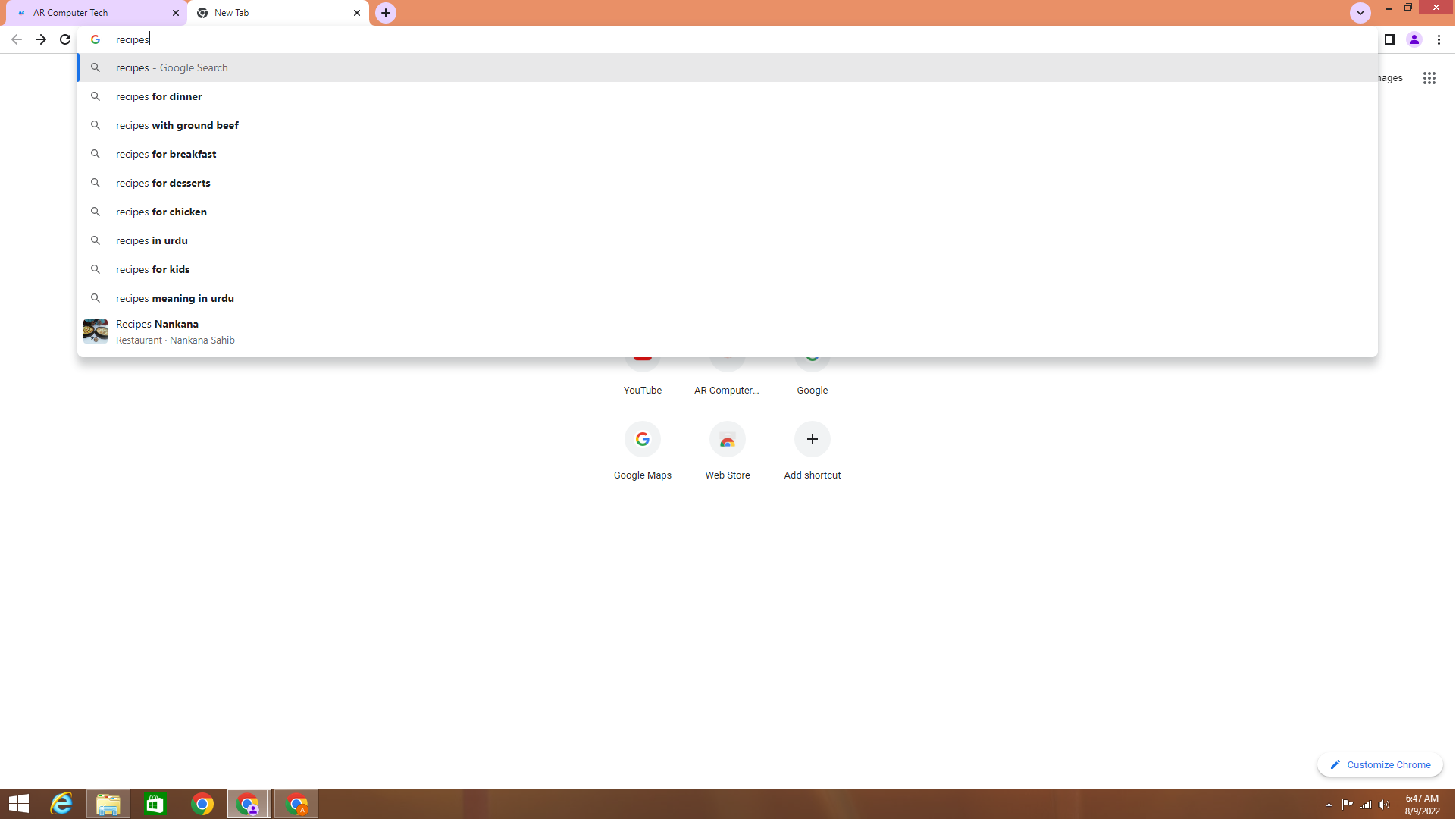
Search suggestions
If you don’t
find what you’re looking for on the first try, don’t worry! Search engines are
good at finding things online, but they’re not perfect. You’ll often need to try different search terms to find what
you’re looking for.
If you’re
having trouble thinking of new search terms, you can use search suggestions instead. These will usually appear as you’re
typing, and they’re great way to find new keywords you might not have tried
otherwise. To use search suggestion, you can click it with your mouse, or
select it with the arrow keys on your keyboard.
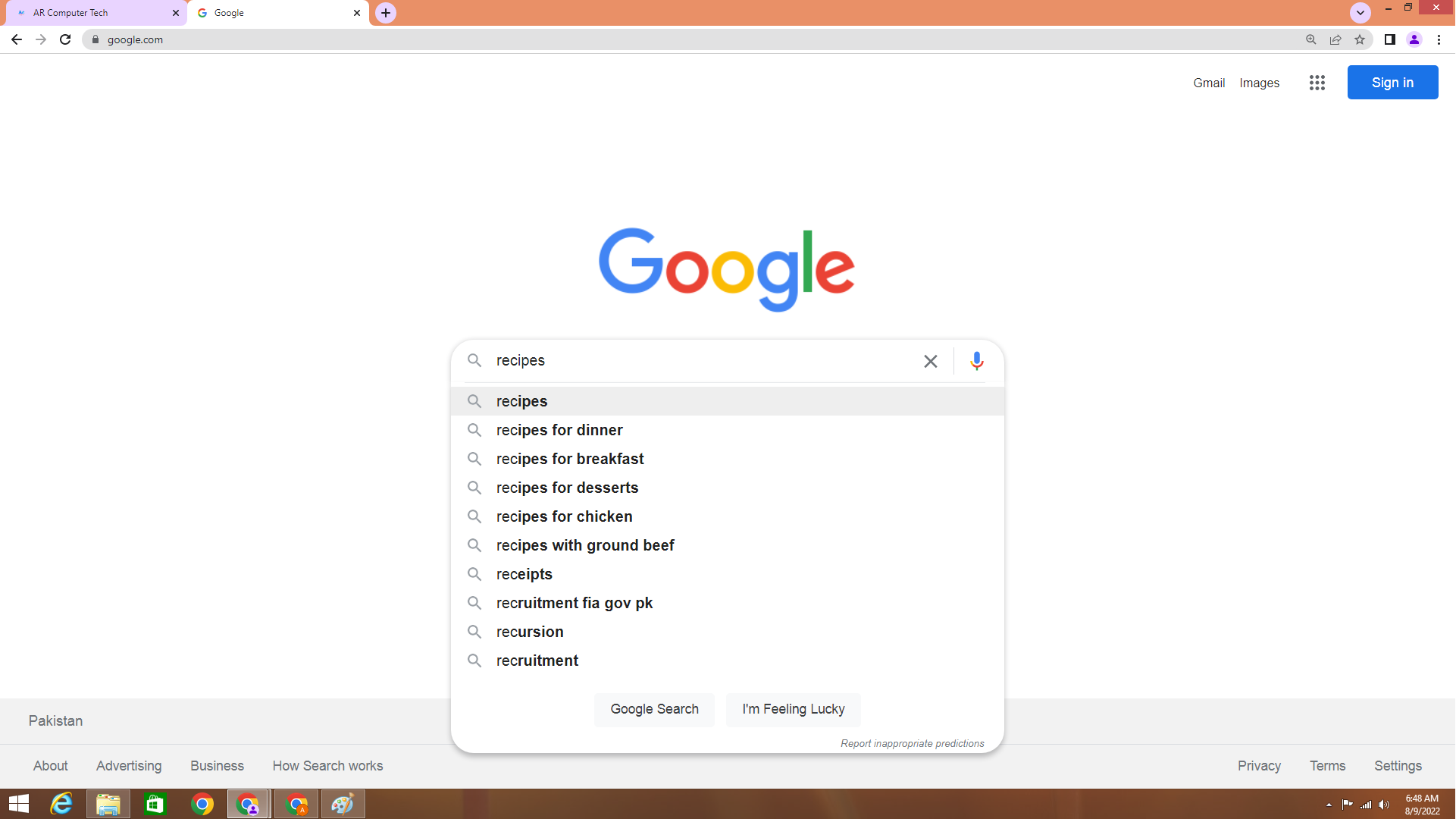
Refining your
search
If you’re
still having trouble finding exactly what you need, you can use some special
characters to help refine your search. For example, if you want to exclude a word from a search, you can
type a hyphen (-) at the beginning
of a word. So if you wanted to find cookie recipes that don’t include
chocolate, you could search for recipes
cookies –chocolate.
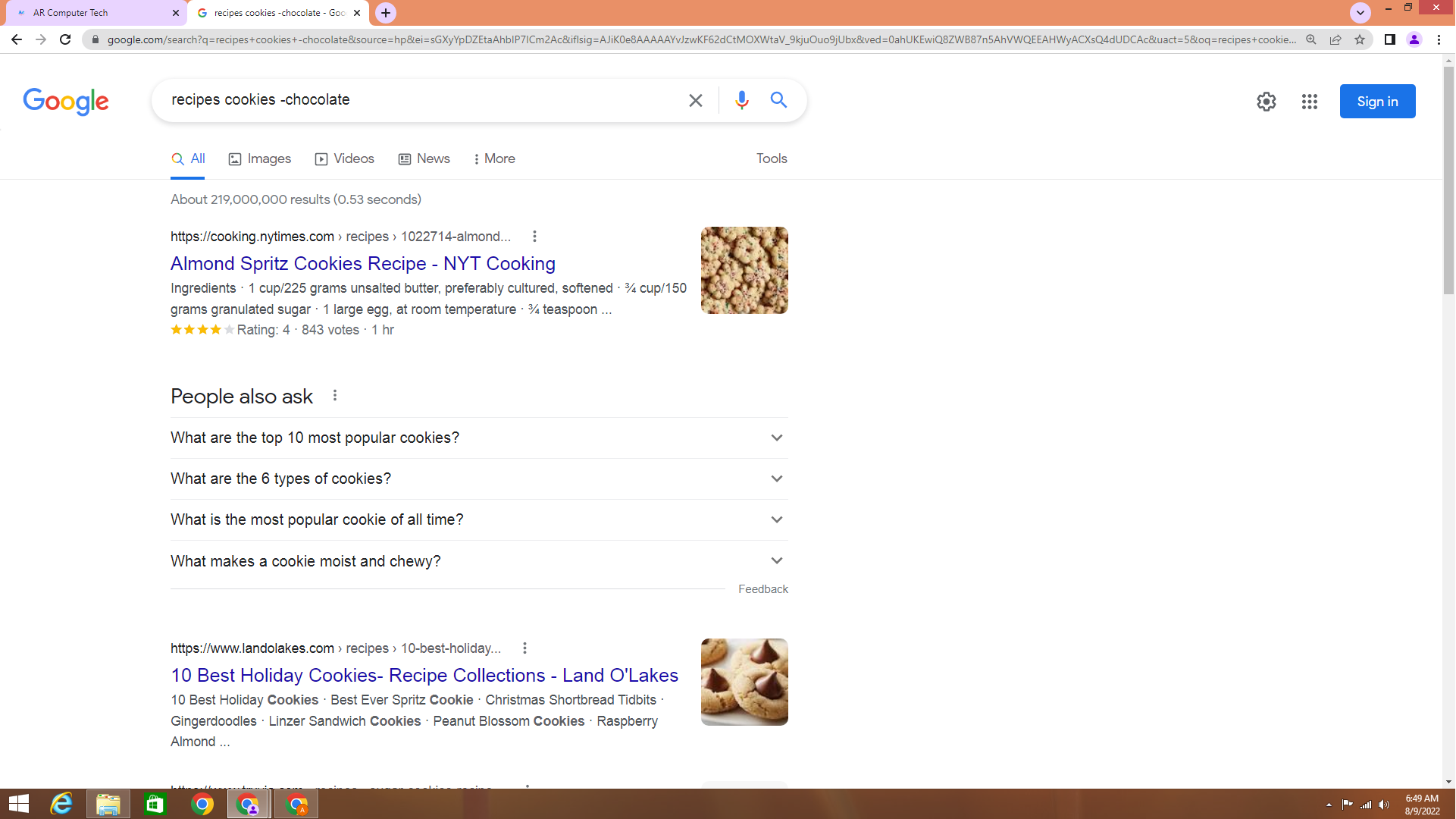
You can also
search for exact word or phrases to narrow down your results even
more. All you need to do is place quotation
marks (“”) around the desired search terms. For example, if you search for recipes “sugar cookies”, your search results will only include recipes for
sugar cookies, instead of any cookies that happen to use sugar as an
ingredient.
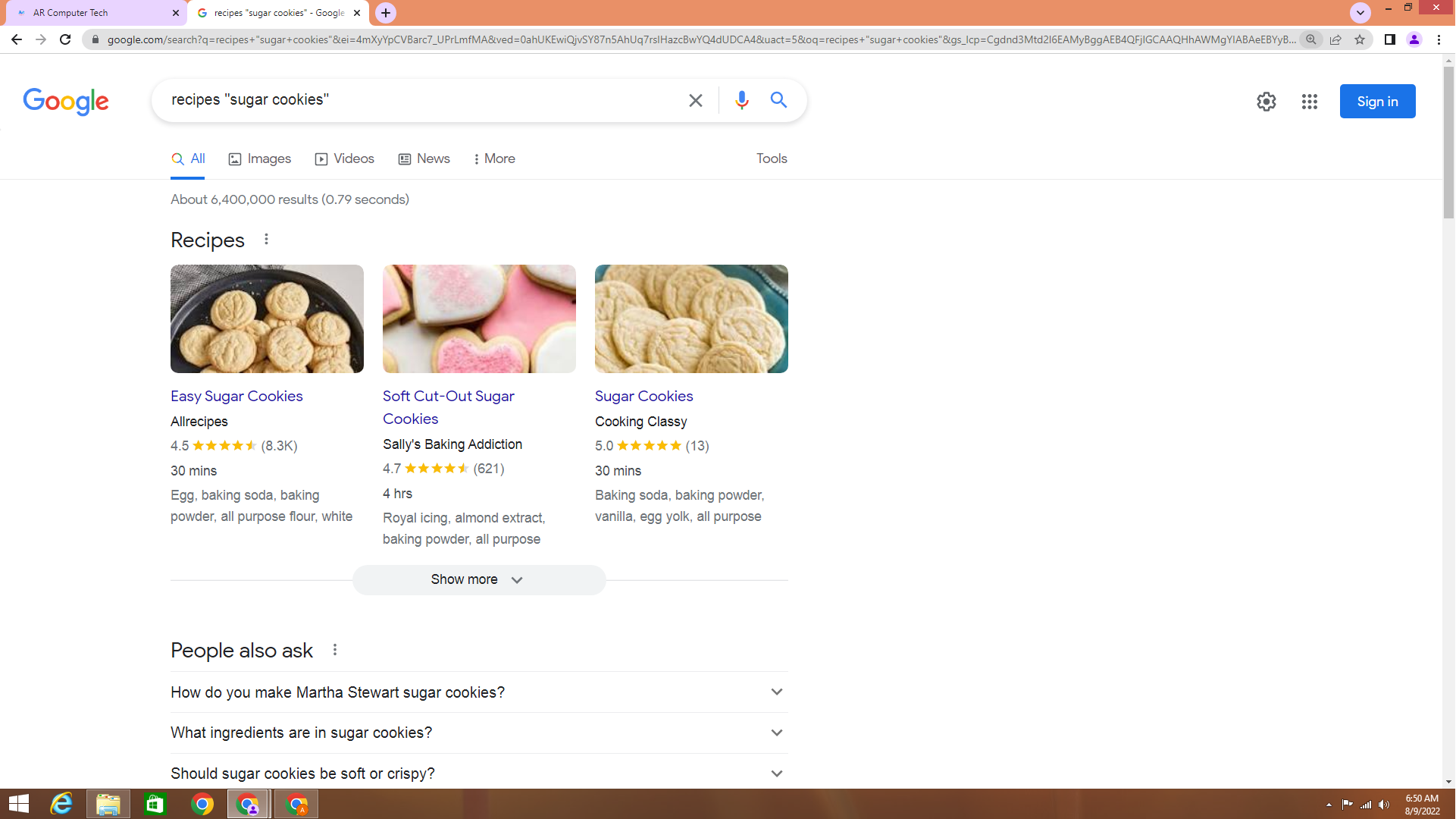
These
techniques may come in handy in certain cases, but you probably won’t need to
use them with most searches. Search engines can usually figure out what you’re
looking for without these extra characters. We recommend trying a few different
search suggestion before using this
method.
Content-specific
searches
There may be
times when you’re looking for something more specific, like a new article, picture, or video. Most
search engines have links at the top
of the page allow you to perform these unique searches.
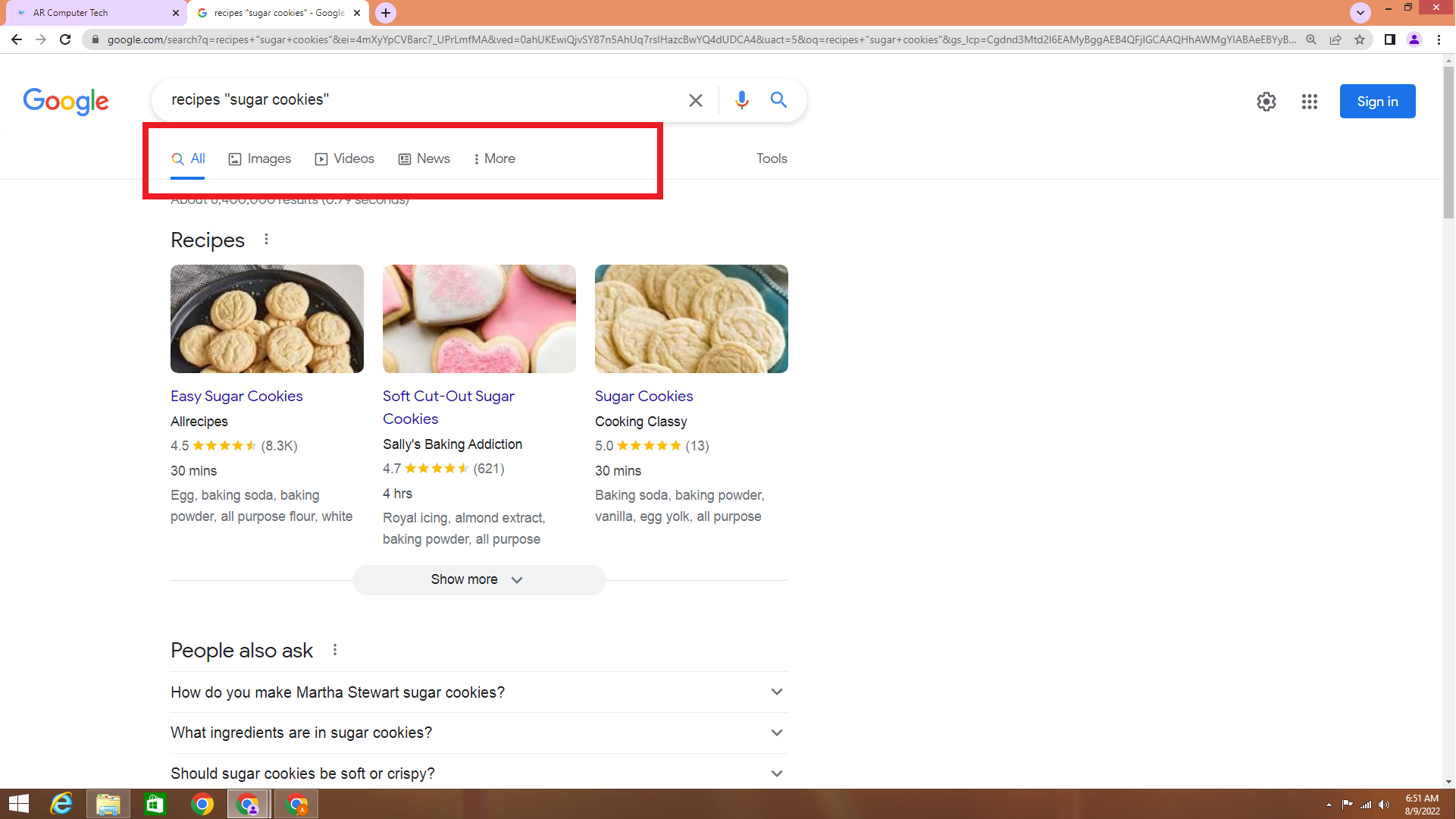
In the
example below, we’ve used the same search terms to look for images instead of websites. If you see
an image you like, you can click to visit the website it originally came from.

You can use
extra search tools to narrow down
your results even more. These tools will change based on the type of content
you’re looking for, but in this example we can filter our images by size, color, image type, and
more. So if you wanted to find cookies with pink frosting, you could search for
images that are mostly pink.

Advertisements
These ads
are based on your search terms, and often look similar to other search results.
While they may be useful in some cases, it’s usually more helpful to focus on
the actual search results.




